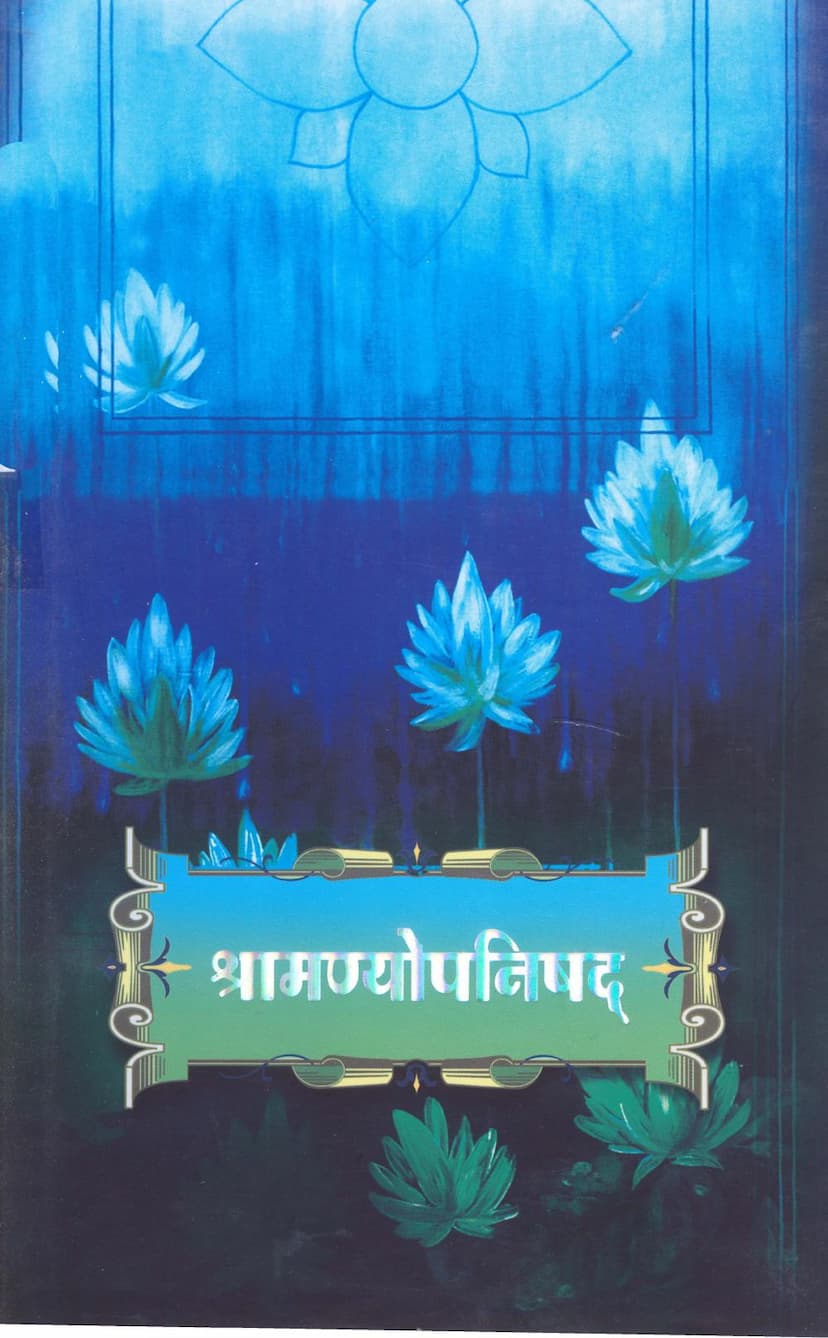Shramanyopnishad
Added to library: September 2, 2025

Summary
Here's a comprehensive summary of the Jain text "Shramanyopnishad" based on the provided pages:
Title: Shramanyopnishad (also referred to as Shramanshatak) Author: Acharya Vijay Kalyanbodhisuri, disciple of Acharya Dev Shrimad Vijay Hemchandrasurishwarji. Publisher: Shri Jinshasan Aradhana Trust. Content: The text is a Sanskrit composition of 100 verses divided into 10 chapters. It elaborates on the "Tenfold Shramana Dharma" (Dashvidh Shraman Dharma).
Core Message and Purpose: The "Shramanyopnishad" is presented as a guide for the pure and superior practice of the Shramana (ascetic) way of life. It aims to provide the essential principles and virtues that are the "lifeblood" (prana) of a disciplined, ascetic existence, without which one cannot truly sustain such a life. The text emphasizes that these Shramana virtues are more fundamental than other practices like self-study, meditation, or service, which are considered merely "limbs" of ascetic life. The ultimate goal is to achieve the joy of living liberation (Jeevanmukti) through the perfect practice of these virtues.
Key Tenets and Structure: The book focuses on the Ten Shramana Virtues, which are:
- Kshama (Forgiveness/Patience): The text deeply explores Kshama, presenting various types and emphasizing its foundational role. It highlights Kshama as the first virtue that manifests after initiation, leading to other higher Shramana virtues. It details its importance in preventing anger, vengeance, and the cycle of endless suffering. The text differentiates between various forms of Kshama, including those rooted in gratitude, those accessible to the fearful of suffering, anger-related introspection, and the highest form, Dharmakshanti, which is innate and steadfast even in extreme adversities.
- Mriduta (Gentleness/Humility): This virtue is described as the source of all good qualities, with humility being the root of gentleness. It emphasizes the importance of inner softness over outward harshness, drawing parallels with natural elements like water that can penetrate stone. Gentleness is presented as a path to liberation and inner peace.
- Rijuta (Straightforwardness/Honesty): This virtue is crucial for purity and the steadfastness of Dharma. The text warns against crookedness and deceit, illustrating how even minor instances can lead to prolonged suffering and spiritual downfall. Straightforwardness is portrayed as the direct path to liberation, while crookedness leads to the cycle of worldly existence.
- Mukti (Liberation/Detachment): This virtue is associated with freedom from attachment and possessiveness (mamata). The text stresses that true liberation comes from detachment from material possessions, body, and even worldly pleasures. It criticizes greed as an endless pit and highlights that detachment is the true essence of liberation, making it accessible rather than difficult.
- Tapa (Austerity/Penance): Tapa is presented as essential for spiritual progress, praised by Lord Mahavir. It is divided into external (Bahya) and internal (Antara) Tapa. External Tapa includes fasting, controlled eating, renouncing desires, etc. Internal Tapa includes penance, service, self-study, humility, and meditation. The text emphasizes that Tapa, when practiced with the right understanding, is not a source of suffering but a means to profound happiness and spiritual purification.
- Sanyama (Self-Control): Sanyama is defined as restraining oneself from the five transgressions (violence, falsehood, stealing, unchastity, and possession) and controlling the senses and passions. It is described as the ship that carries one across the ocean of worldly existence and the essence of Jain spiritual discipline. The text outlines its various forms and its supreme importance for spiritual advancement.
- Satya (Truthfulness): Truth is paramount, even at the cost of one's life. It is defined by its non-contradictory nature across thought, word, and deed. The text emphasizes that true truth is beneficial and leads to spiritual growth, while even seemingly true statements that are harmful are considered untruthful. The ultimate truth is seen as residing in the soul, and detachment from passions leads to this truth.
- Shaucha (Purity): Purity is not just external cleanliness but primarily internal purity of mind, speech, and action. The text argues that merely bathing in holy waters does not purify the mind, which remains tainted by negative emotions and desires. True purity is achieved through inner purification, leading to spiritual liberation and ultimate bliss.
- Akinchanta (Non-possession/Renunciation): This virtue is about detachment from all forms of possessions, not just material wealth but also attachment to the body, family, and reputation. True non-possession is described as being free from "mamata" (attachment and possessiveness), which is the root of all suffering. Even a minimal sense of possession can hinder spiritual progress.
- Brahmacharya (Celibacy/Chastity): This virtue is considered the highest and most difficult, yet the key to liberation. It encompasses restraint from all forms of sensual indulgence and attachment. The text emphasizes the importance of controlling the senses, especially the tongue and mind, and renouncing worldly pleasures and possessions. It is presented as the ultimate path to realizing the soul's true nature and achieving eternal happiness.
Additional Features:
- Praise of Gurus: The text is dedicated to the lineage of eminent Jain Acharyas, particularly highlighting the influence of Acharya Vijay Hemchandrasurishwarji.
- Praise for Lord Mahavir: The work begins with reverence for Lord Mahavir, the 24th Tirthankara.
- Appendices (Parishishtas): The book includes nine appendices that further elaborate on Shramana Dharma by quoting from other significant Jain scriptures and works, such as:
- Prashmarati by Shri Umaswati Maharaja
- Yati Dharma Trishati by Shri Yashovijayji Maharaja
- Aradhana Shatak by Shri Dharmadhurandharsurishwarji
- Yati Dharma Sajhayo by Shri Gyanvimalsurishwarji
- Atma Shuddhi by Shri Bhuwanchandraji
- Swamikartikeyanupreksha by Shri Kartikeya Swami
- Padmanandi Panchavinshti by Shri Padmanandi
- Dashlakshan Dharma Puja (two versions, by Shri Raghu and Shri Dhyantrai)
- Linguistic Style: The text is composed in Sanskrit verses, with explanations or "Bhavanuvaad" (interpretation of meaning) provided in Gujarati. The verses are in various meters, including Anushtubh and Vasantatilaka.
- Inspiration: The composition was inspired by the 100th birth anniversary of Acharya Vijay Bhuvanbhanusurishwarji.
In essence, "Shramanyopnishad" is a profound and comprehensive treatise on the foundational virtues essential for any Jain monk or aspirant striving for spiritual purification and liberation, offering a roadmap to living a truly ascetic life.